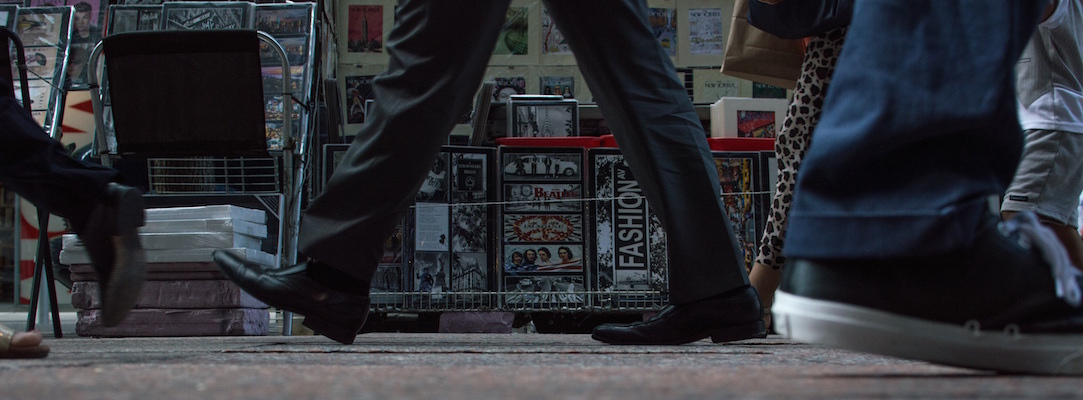Usability testing isn’t just a useful research exercise – it can be entertaining, funny, engrossing, satisfying, and more.
In our field we talk about “the user” in the abstract a lot. It’s easy to forget the human faces and personalities we’re really referring to. Usability testing puts all of that personality and humanity right back at the forefront, and when users start speaking their minds it’s eye-opening, and sometimes hilarious!
Without further ado, here’s 8 usability lessons as demonstrated by our favorite user quotes.
Read more: 5 more usability lessons from user quotes
1. Make an impression
Users will not always be kind about your designs – nor should they be! Criticisms may be short and succinct, like the user who checked out one website’s home page and proclaimed, “Truthfully it was not memorable.”
Read more: Understanding users’ first impressions of your site
2. Lose the fluff
Other users may go into much greater detail about what they don’t like. This user on Yelp, for example, took his time shredding the site’s home page design piece-by-piece:
My eye is kind of ignoring the rest of it. I don’t really want to look at anything else because I know I’m going to be using the search bar…
Free Account, I have no interest in that.
We’ve got a Review of the Day, I don’t know why I’d read something that isn’t directly related to what I’m looking up.
Best of Yelp. Yeah, that seems like it could be interesting.
Trying to sell me on the mobile app.
Popular Events. Uhhh not interesting to me. Recent Activity. Not interesting to me. Fresh Lists. I don’t really know what that is. Today in Talk. I still don’t know what that is.
Pictures of cake, of course I’m very interested in.
Whew, this just keeps going, huh?
Lesson: Some users would rather you drop all the distractions, and just put the focus on the main actions. Like another user on the Pizza Hut website:
The rest seems too much for what I really want. When I go to Pizza Hut, all I want is pizza. I don’t really care about any of the other breadsticks, desserts, or anything else.
3. Catch people’s attention
It only takes one little detail to stand out from the crowd. On Serengetee, one user became much more interested when he saw the Total Cause Donations counter below the site’s main banner:
Ok, this definitely got me. I want to know more about their mission now. The home page really got me on that. I want to know why they’re doing this.
4. Beware the vague stock photo
“What is the site about? I guess i couldn’t really tell immediately from the picture, because it just had a picture of someone’s hands doing office work at a desk.”
You know those stock photos.
5. Draggable + droppable = wonderful
There’s something that’s so breezily convenient about a well done drag-and-drop UI, as this Instapage user attested to:
Everything is draggable and droppable! That’s awesome. It’s fantastic.
6. Pestering has its price
Be judicious! You may think your newsletter is special, but how many other websites’ pestering popups have your users already had to deal with that day?
One user had had enough, and declared with a long, wistful sigh: “Everybody wants you to siiiiign up for something!”
7. A well-written scenario makes a difference
The scenario is the first thing users read when they start their usability test. A detailed, relatable scenario can really get people in the zone, as shown by this user’s thorough analysis of Pizza Hut‘s Triple Treat deal:
A Triple Treat bundle, which is $19.99, seems like the best deal since I’m with a few friends; it brings 2 medium, one-topping pizzas (which is what they want because not everybody wants the same topping); 5 breadsticks or flavor sticks for everybody; AND we still have a chocolate chip cookie, which has 8 slices, which is perfect for my friends who are over so that each one of them can get 2 slices.
Read more: Writing usability testing scenarios & tasks
8. No white text on white backgrounds
Okay, so we’re pretty sure this was just a coding accident and not a true “design” flaw, but a website we tested had a page where all of the text was white. On a white background.
The user’s reaction turned from confusion to shock as he accidentally highlighted a piece of unseen text and then gradually dragged his cursor across the page to reveal the rest.
There should really be some explanation text or something here. I don’t know, is there anything loading? Oh! What?! Oh my gosh there’s some text underneath here. If I select this thing… Is this on purpose? This is a fairly weird choice on your part. White text on a white background. Very unconventional.
Lesson: Always double check your code!
What’s the best quote you’ve ever heard during a usability test?




